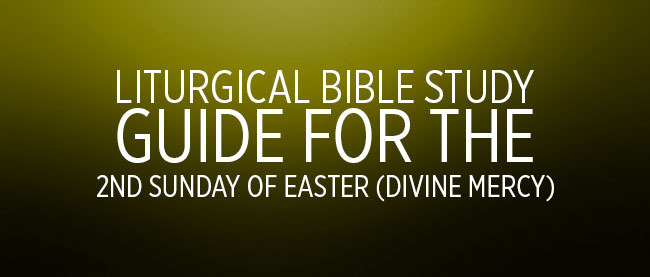Introduction
On April 30, 2000, His Holiness John Paul II, in response to the wishes of the Christian faithful, declared that “the Second Sunday of Easter henceforth throughout the Church will also be called Divine Mercy Sunday.” The desire for this celebration was expressed by Our Lord to Saint Faustina as can be found in her Diary (§699):”… My daughter, tell the whole world about My inconceivable mercy. I desire that the Feast of Mercy be a refuge and shelter for all souls, and especially for poor sinners. On that day the very depths of My tender mercy are open. I pour out a whole ocean of graces upon those souls who approach the fount of My mercy. The soul that will go to Confession, and receive Holy Communion on this day shall obtain complete forgiveness of sins and punishment…”
1st Reading – Acts 2:42-47
The Acts (Deeds) of the Apostles were written by Saint Luke toward the end of the first captivity of Saint Paul in Rome, about 62 A.D. The earliest tradition of the Church concurs in attributing this inspired book to Saint Luke, author of the third gospel. This book, like the gospel, is dedicated to Theophilus, of whom we know nothing.
The Book of the Acts of the Apostles, sometimes lovingly referred to as the fifth gospel, relates: (1) the history of the early Church in Jerusalem and Antioch, and the history of Saint Peter until the year A.D. 42, when he left Jerusalem; and (2) the history of Saint Paul until his captivity in Rome in the Year A.D. 61.
Our reading today takes place immediately after Peter’s stirring address on the day of Pentecost when 3,000 were baptized. This is the first of three summary passages (Acts 4:32-37; 5:12-16) which outline the chief characteristics of the Christian community in Jerusalem: adherence to the teachings of the Twelve and the centering of religious life in the Eucharistic liturgy; a system of distribution of goods that led the wealthier Christians to sell their possessions when the needs of the poor of the community required it; and continual attendance at the Temple.
2nd Reading – 1 Peter 1:3-9
This first letter of Peter was written from Rome very probably around A.D. 63-64, given that it contains no references to the persecution unleashed by Nero after July 64. The letter is addressed to the Christians of Asia Minor – gentiles evangelized mainly by Saint Paul.
In this letter, Saint Peter seeks to console and strengthen the faith of Christians who are experiencing difficult times; this is quite in keeping with his role as head of the Church. This message (letter) which we will study as our second reading all through the Easter season, is a faithful reflection of the catechesis of apostolic times.
Gospel – John 20:19-31
Having celebrated Jesus’ resurrection last week at Easter, we now hear of His first appearance to His apostles after that event.


